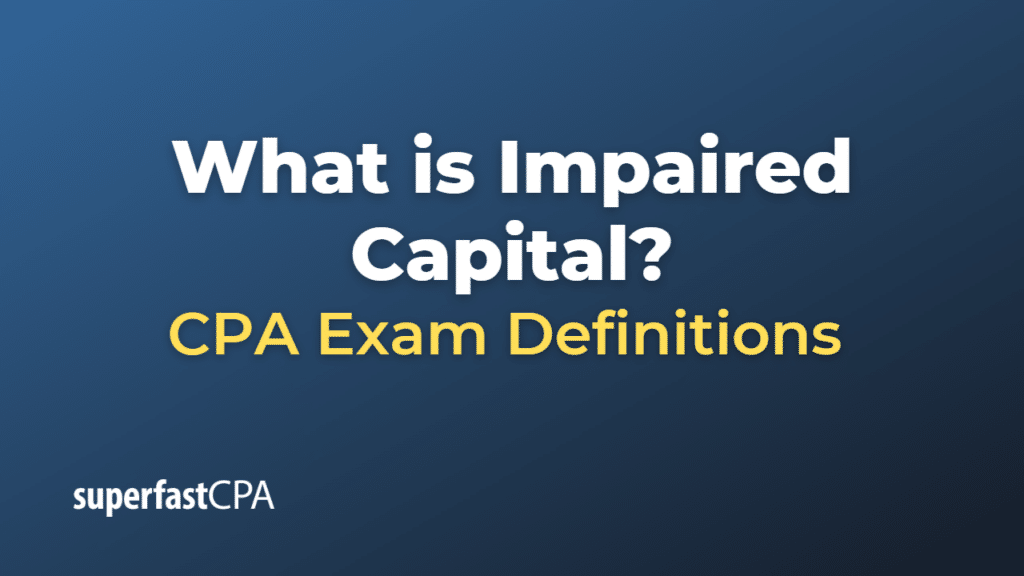Impaired Capital
Impaired capital occurs when a company’s total capital becomes less than the par value of the company’s capital stock. In other words, it’s when a company’s net assets (total assets minus total liabilities) are less than the company’s stated capital.
Stated capital typically includes the par value of issued shares and additional paid-in capital. It represents the investment that shareholders have made into the company. When the net assets or shareholders’ equity of a company falls below this amount, the capital is said to be impaired.
Impaired capital could result from sustained operating losses, large, one-off expenses (like a lawsuit or asset impairment), or excessive dividends distributions, among other things. This situation can be a sign of financial distress and may trigger legal restrictions on the company’s ability to distribute dividends, in order to protect the interests of creditors.
The concept of impaired capital is more commonly applied in a legal context and the rules and implications can vary depending on the specific corporate laws in a given jurisdiction. In terms of financial reporting, companies typically focus more on the concepts of solvency and going concern (i.e., the ability to continue operating for the foreseeable future).
Example of Impaired Capital
Let’s consider a simplified example to illustrate the concept of impaired capital:
Let’s say we have a company, XYZ Corp., which has the following on its balance sheet:
- Total Assets: $1,000,000
- Total Liabilities: $800,000
- Therefore, Net Assets (Total Assets – Total Liabilities): $200,000
On the equity side of its balance sheet, XYZ Corp. has:
- Stated Capital (Par Value of Issued Shares + Additional Paid-in Capital): $250,000
- Retained Earnings: Negligible or zero for simplicity
In this case, XYZ Corp.’s net assets of $200,000 are less than its stated capital of $250,000. This means that XYZ Corp.’s capital is impaired by $50,000 ($250,000 – $200,000).
Impaired capital is a serious situation. The company may be restricted in its ability to pay dividends, and it can be a warning sign of financial distress. The company would need to improve its financial position, either by reducing liabilities, increasing assets, or potentially reducing its stated capital, in order to remedy the capital impairment.
This is a simplified example. In practice, company balance sheets and the rules governing capital impairment can be quite complex. As always, it’s important to consult with financial and legal professionals when dealing with these issues.













